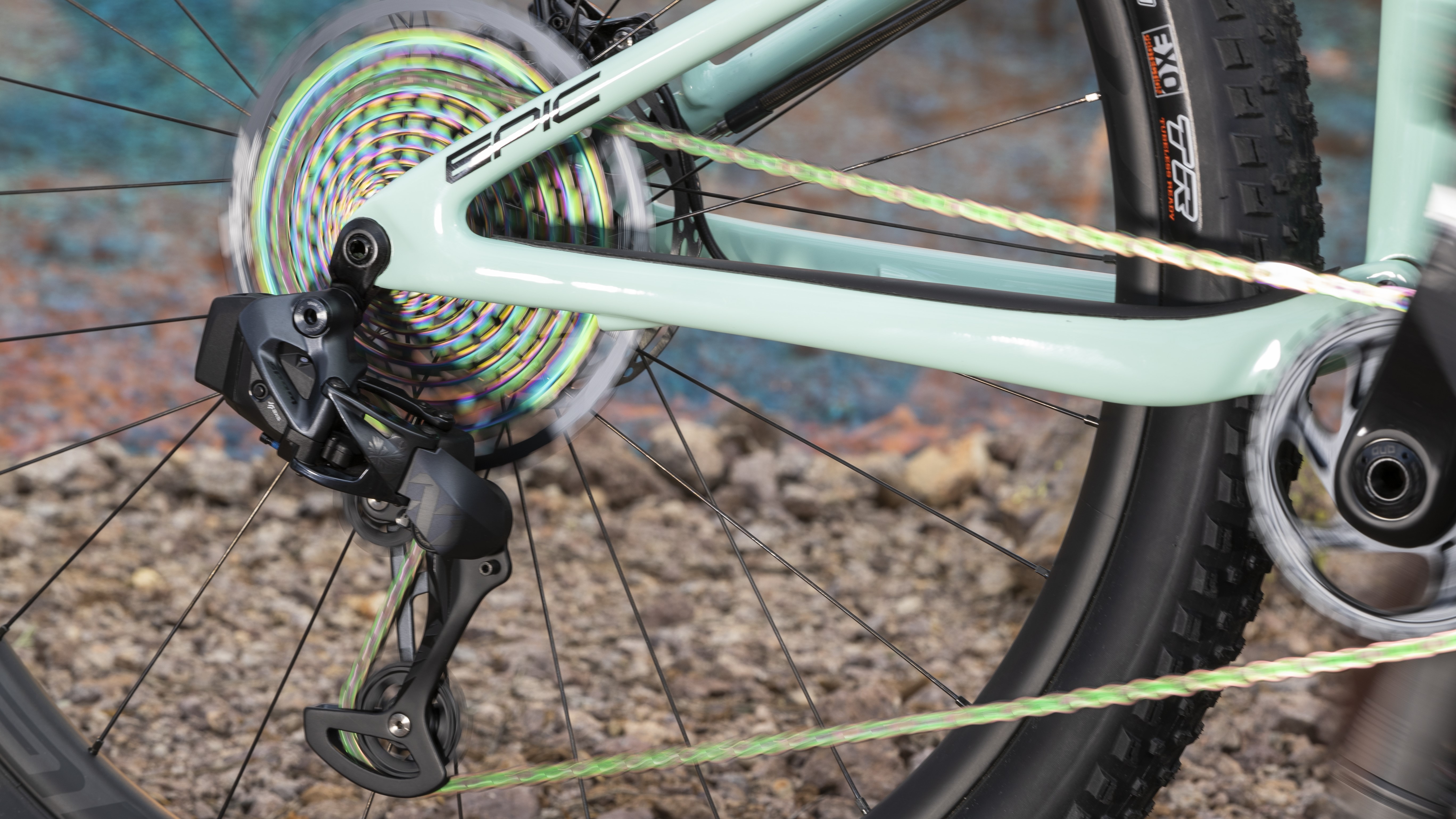Wireless shifting could be the end of internal cabling
Wireless shifting will get cheaper and become widespread, which should have a positive effect on frame design

Wireless shifting has brought electronics to perhaps the most mechanically delicate aspect of mountain biking.
Although the debut technology pricing precludes many from considering Sram’s AXS Eagle drivetrain and dropper seatpost, there is no question that electronic shifting will become more commonplace in future.
Heavier and more affordable versions of the AXS system will come to market. Shimano’s mountain bike product planners will also react, broadening the diversity of choice, and price spread, for customers who desire wireless shifting and dropper seatposts. There are many benefits to the AXS wireless shifting and dropper seatpost system, but perhaps the most underappreciated aspect is the ease of installation. Without cables to fasten or guide, the AXS wireless system makes building a new mountain bike, from parts to completion, a much slicker affair.
As wireless groupsets proliferate they will have an unexpected influential effect on mountain bike frame design.
One of the most aesthetically pleasing - but mechanically annoying - trends in mountain bike design is internal cable routing. Although internally guided cables give mountain bikes a fantastically clean appearance and hide cables from potential snag damage during crashes, they can be horrible to work with.
Without proper guides or grommets, internally routed cables are desperately frustrating to orientate. If you have externally routed cable damage out on a ride, a trail-side repair is possible. With internally routed cables, if you snap the exposed routing to a rear derailleur, you’ll require master bike mechanic skills to execute an outdoor replacement in any reasonable timeframe.
Mechanics have lamented internally routed cabling from the moment it became a trend in mountain biking. Their critique that it is an industrial design obsession of form, instead of function, certainly has some element of truth.
The end of multi-port frames?
Wireless groupsets are a far superior solution in both form and function. You gain the elegant appearance, without any of the internal cable routing annoyance.
There is every reality that high-end frames might soon start reverting to a design prioritising wireless groupsets such as AXS, which would mean a reduction in cable routing ports, as they become superfluous with an electronic shifting system.
Mountain biking history is littered with trends which appeared to be inspired industrial design, but was, in fact, mere fashion. Internal cable routing, in an era of wireless shifting, could well become one of those.
Internal routing never provided comprehensively superior function to traditional, externally routed cables. And increased the build and maintenance annoyance factor. The progression in drivetrain technology should have been an evolution from externally routed cabling to wireless shifting, without the uncomfortable internal cable design frames as an intermediary.
Moulding carbon mountain bike frames, without additional cable ports for internal routing, could see a slight price reduction, due to simplification of design and easier production. Getting rid of cables could also allow more freedom for dual-suspension frame designers, in terms of linkage designs, pivot placement and bearing size. The issue of where and how to route and port cables, between the two triangles of a dual-suspension frame, has been a limiting factor for designers.
This is slowly being liberated by wireless integration of traditionally mechanical components. There is no doubt that wireless systems will yield superior mountain bike frames in future, whereas internally-routed designers, merely looked pretty.

Lance Branquinho is a Namibian-born journalist who graduated to mountain biking after injuries curtailed his trail running. He has a weakness for British steel hardtails, especially those which only run a single gear. As well as Bike Perfect, Lance has written for MBR.com, Off-Road.cc and Cycling News.
